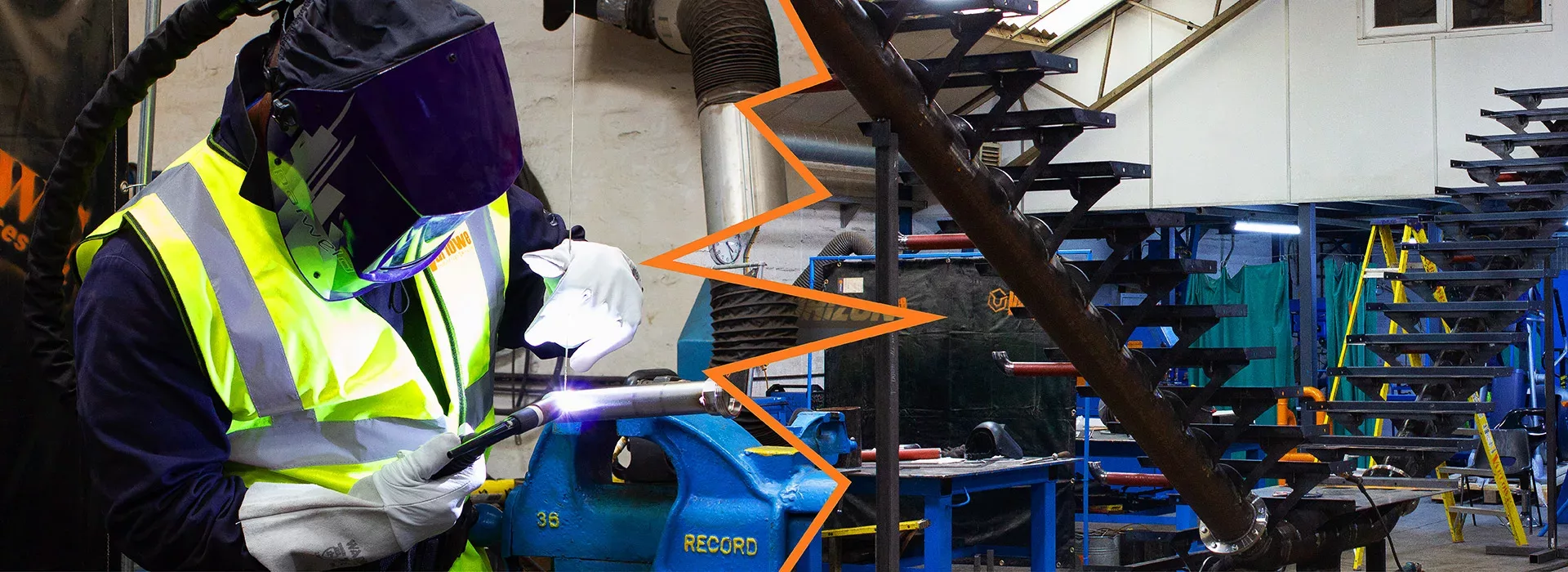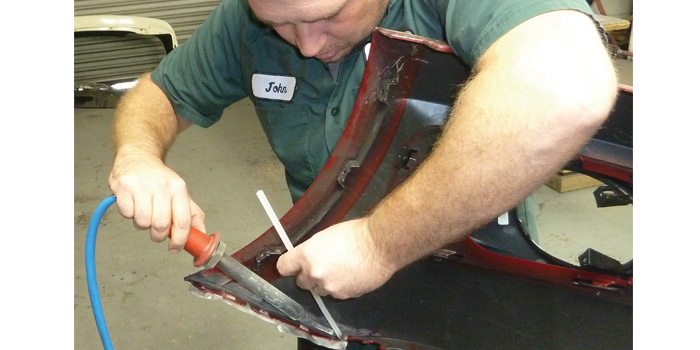Common Welding Repair Service Issues and Exactly How to Address Them Effectively
Welding repairs usually run into a variety of concerns that can threaten the stability of the end product. Typical troubles include insufficient penetration, porosity, and imbalance, amongst others. Each flaw offers unique challenges that call for particular approaches for resolution. Recognizing these issues is important for welders aiming to improve their abilities and end results. This conversation will certainly explore these typical welding repair work issues and efficient techniques to address them.
Poor Penetration
Poor infiltration takes place when the weld metal stops working to fully fuse with the base material, causing weak joints and potential structural failings. This issue typically originates from not enough warm input, inaccurate electrode angle, or inappropriate welding rate. Welders might run into insufficient infiltration because of a miscalculation of the required criteria for a details product thickness or kind. In addition, contamination on the base material's surface can hinder reliable bonding, exacerbating the issue. To address inadequate infiltration, welders ought to assure proper setups on their equipment and keep a clean job surface. Regular examination of welds is suggested to identify any shortages early, permitting timely corrections and the prevention of compromised structural honesty in welded settings up.
Porosity
Porosity is a typical problem in welded joints that materializes as little gas bubbles caught within the weld metal. This issue can jeopardize the integrity of the weld, causing decreased toughness and potential failing under tension. Belgrade. Porosity normally arises from contamination, wetness, or improper welding techniques, which permit gases to get away into the molten weld swimming pool. To attend to porosity, welders need to assure proper surface area preparation, preserve a tidy workplace, and utilize appropriate welding specifications. In addition, choosing the right filler material and shielding gas can minimize gas entrapment. Regular evaluation and testing of welds can assist determine porosity early, assuring prompt rehabilitative activities are taken, thus protecting the top quality and dependability of the welded structure
Imbalance
Misalignment in welding can arise from various elements, including incorrect arrangement and thermal expansion. Comprehending the origin triggers is crucial for efficient resolution. Numerous modification techniques are readily available to realign components and ensure architectural integrity.
Reasons of Imbalance
Welding imbalance typically stems from a range of underlying concerns that can compromise structural stability. One main reason is incorrect fit-up of elements before welding, which can result in voids and irregular surface areas. Variants in thermal expansion during the welding process can additionally result in distortion, specifically if the products being joined have various coefficients of growth. Additionally, poor fixturing and clamping may stop working to hold parts safely in position, causing movement throughout welding. Inadequately maintained devices, consisting of welding devices and tools, may introduce incongruities in the weld bead, more adding to misalignment. Driver error, stemming from inadequate training or experience, can also play a considerable function in developing misaligned welds.

Correction Strategies Offered
Attending to imbalance effectively requires a mix of restorative techniques tailored to the certain issues at hand. One typical approach is making use of components or jigs to hold elements in the proper position throughout welding, ensuring regular alignment. In addition, preheating the products can assist decrease distortion and improve fit-up. For considerable misalignment, mechanical adjustment methods, such as making use of hydraulic jacks or clamps, can be employed to remedy the setting prior to welding. Post-weld warm therapy might likewise be required to relieve anxieties caused by misalignment. Careful inspection and adjustment throughout the arrangement stage can avoid misalignment problems from becoming substantial troubles, advertising a smoother welding process and enhancing overall architectural stability.
Distortion
Distortion is a common challenge in welding that can emerge from various variables, including uneven home heating and air conditioning. Comprehending the sources of distortion is essential for executing effective avoidance techniques. Addressing this problem not just boosts architectural integrity however additionally boosts the general high quality of the weld.
Root causes of Distortion
When based on the extreme warmth of welding, products frequently undertake changes that can cause distortion. This sensation mostly occurs from thermal development and contraction during the welding procedure. As the weld area heats up, the product expands; upon cooling, it gets, which can develop inner stress and anxieties. In enhancement, unequal heating across a work surface can aggravate these stress and anxieties, causing warping or bending. The sort of material likewise plays a substantial duty; metals with differing thermal conductivity and coefficients of growth might react in different ways, causing uncertain distortions. Furthermore, poor joint style and insufficient fixturing can add to imbalance during welding, raising the chance of distortion. Comprehending these reasons is necessary for efficient welding fixing and prevention approaches.
Prevention Techniques
Efficient avoidance techniques for distortion throughout welding focus on managing heat input and guaranteeing appropriate joint style. Keeping a consistent warmth input aids to reduce thermal growth read what he said and tightening, which can result in distortion. Using strategies such as pre-heating the workpiece can additionally decrease the temperature level slope, advertising consistent heating. In addition, selecting suitable joint designs, such as T-joints or lap joints, can enhance security and decrease anxiety focus. Implementing proper fixturing to protect the work surfaces in position further help in maintaining alignment during the welding process. Staggered welding series can disperse heat a lot more evenly, avoiding local distortion. By applying these techniques, welders can significantly lower the likelihood of distortion and enhance the overall top quality of their welds.
Cracking
Breaking is a typical issue encountered in welding repairs, typically arising from different factors such as inappropriate cooling rates, material option, or insufficient joint prep work. The event of fractures can considerably compromise the integrity of the weld, resulting in possible failings throughout operation. To address this issue, welders should first assess the origin causes, ensuring that products work and properly chosen for the specific application. Additionally, regulating the air conditioning rate throughout the welding procedure is crucial; quick cooling can cause stress and anxiety and cause cracking. Appropriate joint layout and prep work likewise add to decreasing the threat. Implementing these strategies can enhance weld top quality and durability, eventually decreasing the probability of splitting in completed weldments.

Incomplete Blend
A considerable problem in welding fixings is incomplete fusion, which takes place when the weld metal does not adequately bond with the base material or previous weld passes - Belgrade. This problem can result in weak points in the joint, possibly compromising the honesty of the bonded structure. Variables contributing to incomplete fusion include insufficient warmth input, inappropriate welding technique, and contamination of the surface areas being signed up with. To address this concern properly, welders must assure appropriate pre-weld cleansing and surface prep work, in addition to change their welding parameters to achieve adequate infiltration and fusion. Routine evaluation throughout the welding procedure can also assist go to the website identify incomplete combination early, enabling prompt corrective procedures to enhance the overall top quality of the weld
Overheating
While welding fixings can enhance architectural stability, overheating provides a substantial challenge that can lead to material degradation. Too much heat throughout welding can modify the mechanical buildings of steels, resulting in reduced strength, increased brittleness, and bending. This sensation is particularly essential in high-stress applications where architectural reliability is vital. Identifying getting too hot can entail aesthetic assessments for staining or distortion, in addition to monitoring temperature level during the welding process. To reduce the threats related to getting too hot, welders ought to use ideal techniques, such as regulating heat input, adjusting travel speed, and using appropriate filler materials. Furthermore, implementing pre- and post-weld warm treatments can aid bring back product buildings and boost the overall quality of the repair work, guaranteeing long-lasting performance news and security.
Regularly Asked Questions
What Are the Usual Indications of a Welding Defect?

Exactly How Can I Check My Welds for Quality?
To evaluate welds for quality, one can use aesthetic inspections, ultrasonic testing, and radiographic methods. Each technique guarantees structural honesty, identifies issues, and confirms adherence to defined criteria, eventually improving the reliability of the welded joints.
What Safety Safety Measures Should I Take While Welding?
When welding, one need to focus on security by using suitable personal safety equipment, making sure proper air flow, safeguarding combustible materials away, maintaining a clean work space, and being conscious of surroundings to stop injuries and mishaps.
Can I Fix a Weld Without Remodeling the Entire Joint?
Fixing a weld without remodeling the entire joint is feasible, depending on the damages (Montana Mobile Welding and Repair Belgrade Welding). Methods such as grinding, adding filler product, or making use of a welding procedure can successfully deal with specific imperfections while protecting the surrounding framework
What Equipment Are Vital for Reliable Welding Repair Works?
Essential devices for effective welding repairs include a welding machine, cord brush, grinder, safety gear, clamps, and filler products. Each device plays a crucial function in ensuring high quality and security during the repair procedure. Porosity typically develops from contamination, dampness, or improper welding strategies, which permit gases to run away right into the liquified weld swimming pool. Badly conserved equipment, consisting of welding equipments and tools, might present inconsistencies in the weld grain, additional contributing to imbalance. When subjected to the intense warm of welding, products usually undergo changes that can lead to distortion. Fracturing is a common issue encountered in welding fixings, usually resulting from different variables such as incorrect air conditioning rates, product option, or poor joint prep work. A significant issue in welding repair work is insufficient fusion, which takes place when the weld metal does not properly bond with the base material or previous weld passes.